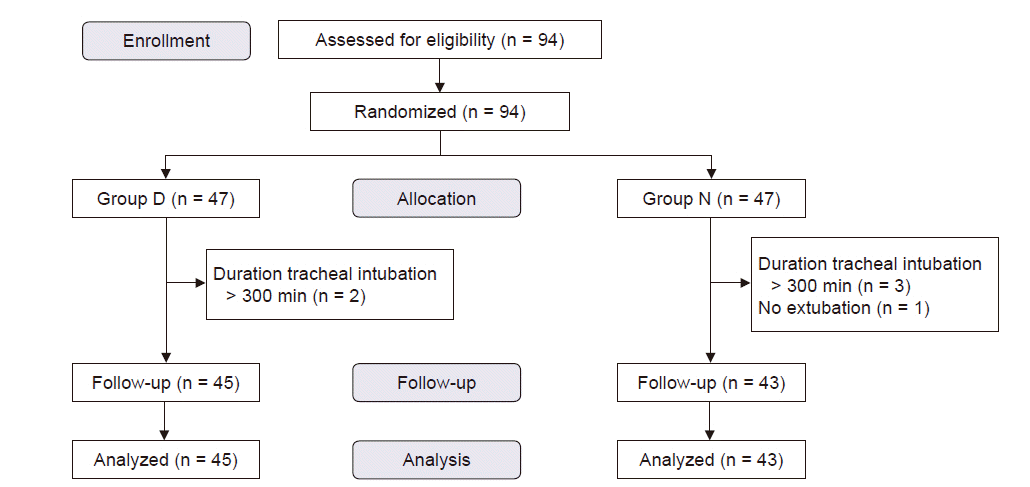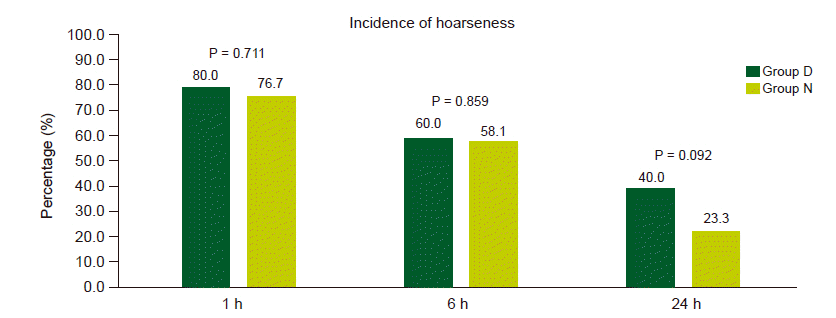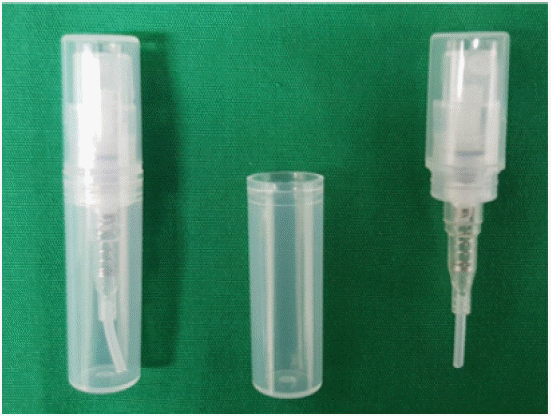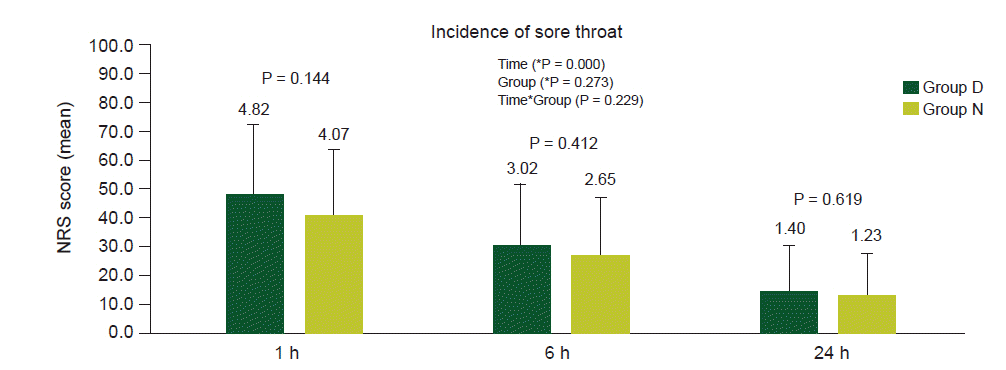1. El-Boghdadly K, Bailey CR, Wiles MD. Postoperative sore throat: a systematic review. Anaesthesia. 2016; 71:706–17.
2. Clayton-Smith A, Bennett K, Alston RP, Adams G, Brown G, Hawthorne T, et al. A comparison of the efficacy and adverse effects of double-lumen endobronchial tubes and bronchial blockers in thoracic surgery: a systematic review and meta-analysis of randomized controlled trials. J Cardiothorac Vasc Anesth. 2015; 29:955–66.
3. Lu Y, Dai W, Zong Z, Xiao Y, Wu D, Liu X, et al. Bronchial blocker versus left double-lumen endotracheal tube for one-lung ventilation in right video-assisted thoracoscopic surgery. J Cardiothorac Vasc Anesth. 2018; 32:297–301.
4. Zhao X, Cao X, Li Q. Dexamethasone for the prevention of postoperative sore throat: a systematic review and meta-analysis. J Clin Anesth. 2015; 27:45–50.
5. Park SH, Han SH, Do SH, Kim JW, Rhee KY, Kim JH. Prophylactic dexamethasone decreases the incidence of sore throat and hoarseness after tracheal extubation with a double-lumen endobronchial tube. Anesth Analg. 2008; 107:1814–8.
6. Kuriyama A, Maeda H. Preoperative intravenous dexamethasone prevents tracheal intubation-related sore throat in adult surgical patients: a systematic review and meta-analysis. Can J Anaesth. 2019; 66:562–75.
7. Lee SH, Lee YC, Lee JH, Choi SR, Lee SC, Lee JH, et al. The prophylactic effect of dexamethasone on postoperative sore throat in prone position surgery. Korean J Anesthesiol. 2016; 69:255–61.
8. Shrivastava R, John GW. Treatment of aphthous stomatitis with topical Alchemilla vulgaris in glycerine. Clin Drug Investig. 2006; 26:567–73.
9. Honing G, Martini CH, Bom A, van Velzen M, Niesters M, Aarts L, et al. Safety of sugammadex for reversal of neuromuscular block. Expert Opin Drug Saf. 2019; 18:883–91.
10. Yang HL, Liu FC, Tsai SC, Tsay PK, Lin HT, Liu HE. Ketorolac tromethamine spray prevents postendotracheal-intubation-induced sore throat after general anesthesia. Biomed Res Int. 2016; 2016:4582439.
11. Huang YS, Hung NK, Lee MS, Kuo CP, Yu JC, Huang GS, et al. The effectiveness of benzydamine hydrochloride spraying on the endotracheal tube cuff or oral mucosa for postoperative sore throat. Anesth Analg. 2010; 111:887–91.
12. Chang JE, Min SW, Kim CS, Han SH, Kwon YS, Hwang JY. Effect of prophylactic benzydamine hydrochloride on postoperative sore throat and hoarseness after tracheal intubation using a double-lumen endobronchial tube: a randomized controlled trial. Can J Anaesth. 2015; 62:1097–103.
13. Choi J, Park YG, Yun MS, Seol JW. Effect of herbal mixture composed of Alchemilla vulgaris and Mimosa on wound healing process. Biomed Pharmacother. 2018; 106:326–32.
14. Tasić-Kostov M, Arsić I, Pavlović D, Stojanović S, Najman S, Naumović S, et al. Towards a modern approach to traditional use: in vitro and in vivo evaluation of Alchemilla vulgaris L. gel wound healing potential. J Ethnopharmacol. 2019; 238:111789.
15. Aqil M, Khan MU, Mansoor S, Mansoor S, Khokhar RS, Narejo AS. Incidence and severity of postoperative sore throat: a randomized comparison of Glidescope with Macintosh laryngoscope. BMC Anesthesiol. 2017; 17:127.
16. van Dijk JF, Kappen TH, Schuurmans MJ, van Wijck AJ. The relation between patients' NRS pain scores and their desire for additional opioids after surgery. Pain Pract. 2015; 15:604–9.
17. van Dijk JF, Vervoort SC, van Wijck AJ, Kalkman CJ, Schuurmans MJ. Postoperative patients' perspectives on rating pain: a qualitative study. Int J Nurs Stud. 2016; 53:260–9.
18. De Oliveira GS Jr, Almeida MD, Benzon HT, McCarthy RJ. Perioperative single dose systemic dexamethasone for postoperative pain: a meta-analysis of randomized controlled trials. Anesthesiology. 2011; 115:575–88.
19. Lima TC, Bagordakis E, Falci SGM, Dos Santos CRR, Pinheiro MLP. Pre-emptive effect of dexamethasone and diclofenac sodium associated with codeine on pain, swelling, and trismus after third molar surgery: a split-mouth, randomized, triple-blind, controlled clinical trial. J Oral Maxillofac Surg. 2018; 76:60–6.







 PDF
PDF Citation
Citation Print
Print





 XML Download
XML Download